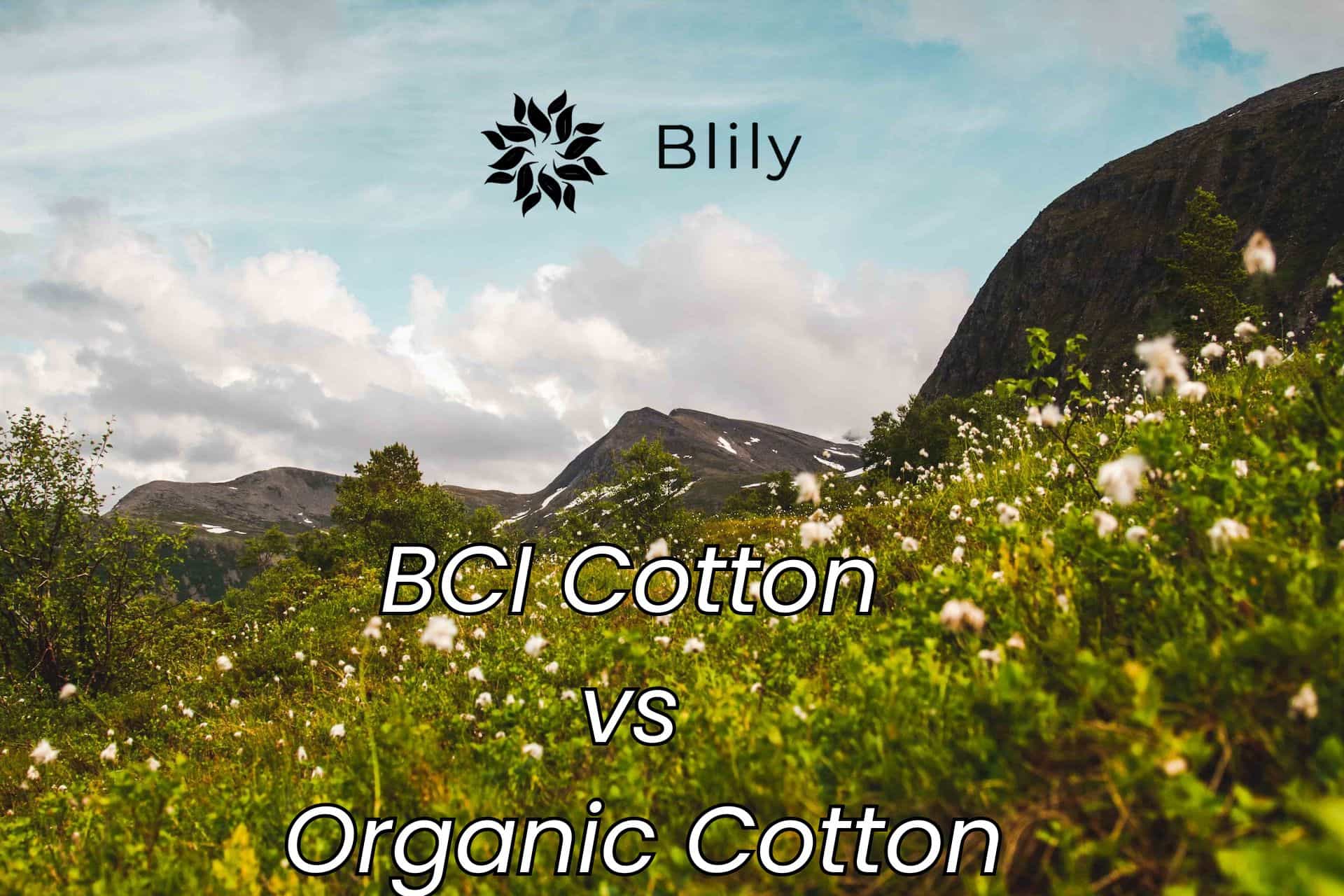Tanace Organics Pvt. Ltd

Compare BCI Cotton and Organic Cotton for Your Sustainable Wardrobe
In the realm of sustainable fashion, consumers are increasingly making conscientious choices. With the rise in eco-awareness, the debate over cotton sourcing has gained momentum. BCI (Better Cotton Initiative) cotton and organic cotton are two major contenders in this conversation. But which is the more environmentally responsible choice? In this comprehensive article, we delve into the key differences between BCI cotton and organic cotton to help you make an informed decision for your wardrobe.
Table of Contents
BCI Cotton – What Is It?
BCI (Better Cotton Initiative) cotton, a term often encountered in the realm of sustainable fashion, is a program initiated in 2005 to enhance the sustainability of cotton farming. It promotes responsible practices throughout the cotton supply chain. Here are some key points to consider:
- Sustainable Practice
The Better Cotton Initiative (BCI) champions sustainable farming through a multifaceted approach. BCI promotes responsible agricultural practices, significantly reducing the environmental impact of cotton cultivation. First and foremost, it advocates for efficient water management, helping farmers optimize water use while minimizing waste. BCI also encourages a substantial reduction in pesticide and chemical usage, safeguarding both the environment and the well-being of farmers. Additionally, BCI prioritizes ethical labor practices, ensuring that workers are treated fairly and paid equitable wages. By spearheading these initiatives, BCI effectively transforms conventional cotton farming into a more environmentally friendly, socially responsible, and economically viable endeavor.
- Reduction in Chemicals
The Better Cotton Initiative (BCI) plays a pivotal role in reducing chemical usage in cotton farming. BCI encourages farmers to adopt more sustainable practices, decreasing their reliance on harmful pesticides and chemicals. Through training and education, BCI equips farmers with knowledge about integrated pest management techniques, promoting the use of natural predators to control pests and diseases. This not only lessens the environmental impact of cotton cultivation but also safeguards the health of farmworkers and surrounding ecosystems. BCI’s commitment to reducing chemical usage represents a significant step towards a cleaner and more sustainable cotton industry, benefiting both the environment and the communities dependent on cotton farming.
- Global Impact
The Better Cotton Initiative (BCI) is a trailblazing force in the global arena, spearheading a comprehensive program to transform the cotton industry. BCI’s impact is not confined to a single region; it operates as a worldwide initiative. By collaborating with a network of stakeholders, including farmers, industry leaders, and civil society, BCI effectively extends its reach across diverse countries and continents. This global approach promotes the adoption of sustainable cotton farming practices on a vast scale. BCI’s commitment to bringing about positive change on a global stage reflects its dedication to creating a more environmentally responsible, socially equitable, and economically viable cotton industry that transcends geographical boundaries.
- Market Accessibility
BCI (Better Cotton Initiative) stands out for its remarkable market accessibility. It has successfully built a bridge between sustainable cotton production and the global marketplace. By engaging with various stakeholders in the cotton supply chain, BCI ensures a steady supply of sustainable cotton. This accessibility makes it easier for sustainable fashion brands and conscious consumers to access BCI cotton products. It’s readily available, allowing the mainstream fashion industry to embrace more sustainable practices. BCI’s commitment to market accessibility not only promotes responsible cotton farming but also empowers the fashion industry to make ethical and sustainable choices, ultimately leading to a more eco-conscious and ethical global market.

Organic Cotton – A Natural Alternative
Organic cotton is grown without the use of synthetic chemicals, genetically modified organisms (GMOs), or toxic pesticides. It is considered a purer and more eco-friendly alternative to conventionally grown cotton. Key points about OC include:
- Natural Growth
Organic cotton distinguishes itself through its natural growth methods. Unlike conventional cotton, OC is cultivated using sustainable farming practices. These methods prioritize soil health and biodiversity. OC farmers refrain from using synthetic chemicals, pesticides, and genetically modified organisms. Instead, they employ natural alternatives to enhance soil quality and support diverse ecosystems. This approach not only promotes healthier farming conditions but also produces cotton with fewer chemical residues. Organic cotton’s natural growth methods signify a commitment to environmental stewardship, yielding a purer and more sustainable material that aligns with the principles of eco-friendly and ethical fashion.
- Chemical-Free
Chemical-free organic cotton epitomizes purity and environmental responsibility. In stark contrast to conventional cotton, OC is grown without the use of synthetic chemicals or toxic pesticides. This means that throughout its cultivation and production, harmful substances are completely eliminated, making it a healthier choice for the environment and for those who cultivate it. By forgoing chemical-intensive practices, OC ensures cleaner soil, purer water, and healthier ecosystems. This chemical-free approach not only reduces environmental pollution but also contributes to safer working conditions for cotton farmers, embodying a more sustainable and conscientious path for the textile industry.
- Certifications
Organic cotton boasts its credibility through rigorous certifications. Prominent among these is the Global Organic Textile Standard (GOTS), which sets the gold standard for certified Organic Cotton. GOTS certification ensures that the entire supply chain adheres to strict organic and ethical criteria. This spans from farming practices to processing, packaging, and labeling, guaranteeing consumers that they are purchasing genuinely organic and sustainable cotton products. These certifications affirm the commitment to environmental preservation, reduced chemical usage, fair labor practices, and traceability within the OC industry. Such rigorous standards provide consumers with confidence in the authenticity and sustainability of the OC products they choose.
- Limited Supply
The limited supply of organic cotton arises from its meticulous cultivation process. OC is grown with strict adherence to sustainable farming practices, which often yield lower quantities compared to conventional cotton. The emphasis on chemical-free, natural growth methods demands more labor-intensive and time-consuming efforts. This, coupled with the need for organic certification, results in a restricted supply. As a result, OC may be scarcer and, at times, pricier. Nevertheless, this limited supply is a testament to its commitment to purity and sustainability, attracting those who prioritize environmental and ethical considerations over quantity and cost.
Environmental Impact
The environmental impact of BCI cotton and organic cotton varies due to differences in farming practices. We’ll explore this in detail:
- Water Usage
The environmental impact of BCI (Better Cotton Initiative) cotton and organic cotton significantly differs in terms of water usage. BCI cotton, while an improvement over conventional cotton, still consumes less water due to more efficient irrigation methods. However, OC shines in this regard by using even less water. Organic farming practices promote water conservation through natural, water-efficient techniques, such as rain-fed farming. This makes OC a superior choice, particularly in regions grappling with water scarcity. By opting for OC, consumers indirectly alleviate the strain on water resources, contributing to a more sustainable and environmentally responsible cotton industry.
- Pesticide and Chemical Use
Pesticide and chemical use varies significantly between BCI (Better Cotton Initiative) cotton and organic cotton. BCI cotton focuses on reducing pesticide and chemical usage, promoting more responsible farming practices. While it’s a step toward sustainability, it doesn’t completely eliminate these substances. On the other hand, OC stands out as a champion of environmental purity. It is cultivated without any synthetic pesticides or chemicals, ensuring soil, water, and ecosystems remain uncontaminated. This not only reduces potential harm to the environment but also safeguards the health of farmworkers and surrounding communities. Organic cotton’s commitment to chemical-free farming sets a high standard for ecological responsibility.
- Biodiversity
Biodiversity in the context of BCI (Better Cotton Initiative) and organic cotton farming reveals noteworthy distinctions. While BCI cotton encourages sustainable practices that reduce harm to ecosystems, it may not always prioritize biodiversity to the same extent as OC. In contrast, OC farming actively promotes biodiversity by eschewing synthetic pesticides and embracing natural, holistic farming methods. These practices create a healthier environment for pollinators, wildlife, and microorganisms. The result is a more harmonious and diverse ecosystem that supports a wide range of life forms. Organic cotton’s commitment to nurturing biodiversity sets a high standard for environmental stewardship within the cotton industry.

Ethical Considerations
Ethical considerations are paramount for both BCI (Better Cotton Initiative) and organic cotton. BCI upholds fair labor practices, ensuring workers are treated ethically. OC goes a step further by embracing ethical principles such as GMO avoidance and stringent supply chain transparency. These ethical choices underscore the commitment to responsible, people-centric cotton production. When it comes to ethical considerations, both BCI cotton and OC have their merits:
- Fair Labor Practices
Fair labor practices are a shared commitment in both BCI (Better Cotton Initiative) and organic cotton production. BCI emphasizes the ethical treatment of workers within its framework, ensuring fair wages and safe working conditions. OC farming similarly prioritizes humane labor practices, promoting just compensation and labor rights. These shared values underscore a dedication to upholding the well-being and dignity of those involved in cotton cultivation, fostering a socially responsible and ethical approach within the industry. Fair labor practices remain a common thread that strengthens the ethical fabric of both BCI and OC initiatives.
- GMOs and Seed Ownership
GMOs and seed ownership are pivotal distinctions between BCI (Better Cotton Initiative) and organic cotton. In the realm of OC, genetically modified organisms (GMOs) are strictly prohibited, preserving natural seed diversity and the autonomy of farmers over their seeds. In contrast, BCI does not explicitly address GMO usage or seed ownership. This marked difference highlights the OC industry’s staunch commitment to ecological purity and the preservation of traditional, non-GMO seed varieties. By supporting non-GMO seeds and empowering farmers in this regard, OC stands as a symbol of agricultural sovereignty and ecological responsibility within the cotton sector.
- Transparency
Transparency in the cotton industry is a crucial facet of both BCI (Better Cotton Initiative) and organic cotton. In the realm of OC, rigorous certification standards, like GOTS (Global Organic Textile Standard), require full supply chain transparency. This means that the entire journey, from farm to consumer, is scrutinized to ensure compliance with organic and ethical criteria. BCI, while promoting transparency, may not have the same level of stringent oversight. Both initiatives, however, acknowledge the importance of transparency as a cornerstone of ethical and sustainable cotton production, allowing consumers to make informed and conscientious choices when selecting cotton products.
Accessibility and Affordability
Accessibility and affordability vary between BCI (Better Cotton Initiative) and organic cotton. BCI cotton, with its widespread availability, tends to be more affordable, making sustainable fashion accessible to a broader audience. OC, while pricier due to limited supply, offers a purer and more sustainable choice, catering to those committed to eco-conscious fashion. One significant factor for consumers is the accessibility and affordability of BCI and organic cotton products:
- BCI Cotton
BCI (Better Cotton Initiative) cotton stands out for its accessibility and affordability. It has made sustainable fashion more attainable for a wider audience. BCI’s widespread adoption in the cotton industry ensures a steady supply of BCI cotton products, resulting in competitive pricing. This accessibility encourages mainstream fashion brands to incorporate sustainable materials, making eco-conscious fashion choices available to the masses. BCI cotton enables consumers to support responsible cotton farming without significantly impacting their budget. The affordability of BCI cotton aligns with its mission to create a more sustainable and ethically sound cotton industry without exclusivity in terms of cost.
- Organic Cotton
Organic cotton, while commendable in its ecological and ethical commitment, often presents a challenge in terms of accessibility and affordability. The limited supply of organic cotton, stemming from meticulous organic farming practices, results in slightly higher prices. This can make organic cotton products less accessible to budget-conscious consumers. However, for those dedicated to sustainability and eco-friendly fashion, the higher price is considered an investment in a purer and more ethical choice. OC serves as a premium option, embodying the principles of environmentally responsible and socially equitable clothing, albeit with a slightly higher price tag.

Making an Informed Choice
The decision between BCI cotton and organic cotton ultimately depends on your priorities and values. Here are some key takeaways:
- BCI Cotton
Making an informed choice regarding BCI (Better Cotton Initiative) cotton involves considering your priorities and values. BCI cotton is ideal for those seeking a more sustainable alternative to conventional cotton, without a significant impact on their budget. It promotes responsible farming practices, reducing water and chemical usage, and ensuring fair labor standards. By choosing BCI cotton, consumers support a more environmentally responsible and socially equitable cotton industry. This allows them to wear their values with pride while contributing to the broader movement towards a more sustainable fashion sector, striking a balance between sustainability and affordability.
- Organic Cotton
When opting for organic cotton, you’re embracing the purest and most environmentally responsible choice. Organic cotton’s chemical-free, GMO-free, and transparently certified farming practices make it a symbol of eco-conscious fashion. Making an informed choice means committing to a cleaner, more ethical wardrobe. While organic cotton fabric may come at a slightly higher price and with limited availability, it caters to those deeply committed to reducing their environmental footprint and supporting fair labor practices. By choosing organic cotton, you’re making a powerful statement about your dedication to ethical, sustainable fashion, contributing to a greener, cleaner, and more equitable industry.
- Mix and Match
Opting for a mix-and-match approach allows you to strike a balance between sustainability and budget. It’s a strategic way to make informed choices in your wardrobe. By combining both BCI (Better Cotton Initiative) and organic cotton pieces, you can enjoy the benefits of sustainable fashion without overextending your budget. This approach lets you wear your values in a way that suits your financial constraints, offering the flexibility to support eco-friendly fashion within your means. It’s a pragmatic solution that reflects the diversity and adaptability of the sustainable fashion movement, ensuring that you can make ethical choices without compromising your style or budget.
Advantages of Organic Cotton Fabric
Organic cotton offers a multitude of advantages, making it a sustainable and eco-friendly choice. Firstly, it’s grown without the use of synthetic pesticides or genetically modified organisms, reducing chemical exposure for both farmers and the environment. This promotes healthier soil and water systems, fostering biodiversity.
Furthermore, organic cotton cultivation relies on natural techniques, like crop rotation and composting, which enhance soil quality and minimize erosion. It conserves water, requiring less irrigation than conventional cotton, which is crucial in regions facing water scarcity.
Organic cotton Fabric and Products are also safer for consumers, as they contain no residual chemicals. Beyond that, the organic cotton industry supports fair labor practices and the empowerment of local communities. Overall, opting always organic cotton contributes to a more sustainable and ethical fashion and textile industry.
Conclusion
In the quest for sustainable fashion, BCI cotton and organic cotton each offer their unique advantages. Ultimately, the choice between them depends on your values, priorities, and budget. As the world becomes increasingly eco-conscious, both options contribute to a greener, cleaner, and more ethical fashion industry. Make your choice, and wear your values with pride.
By selecting either BCI or organic cotton, you are taking a step towards a more sustainable and ethical wardrobe, contributing to a brighter future for the planet. So, whether you choose Better Cotton Initiative cotton or embrace the purity of organic cotton, your decision can be a powerful one in the journey toward a more sustainable fashion industry.







